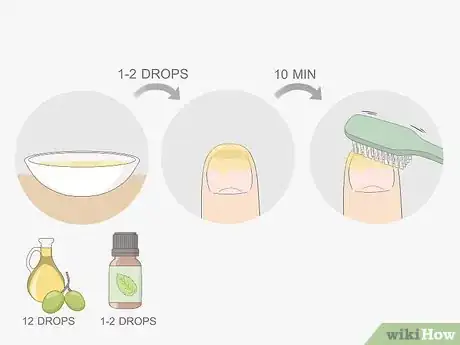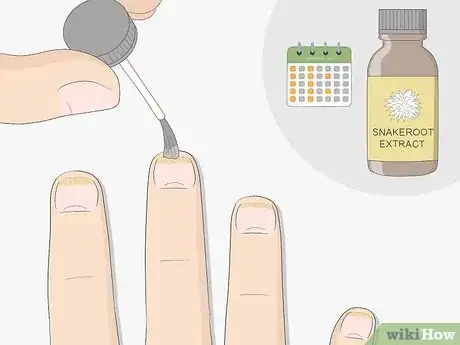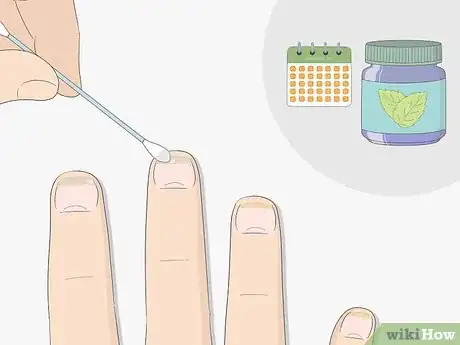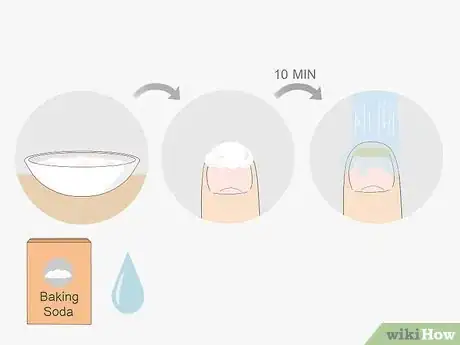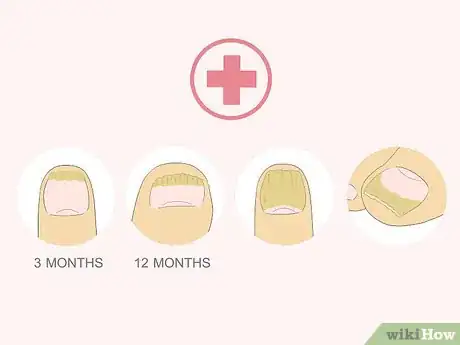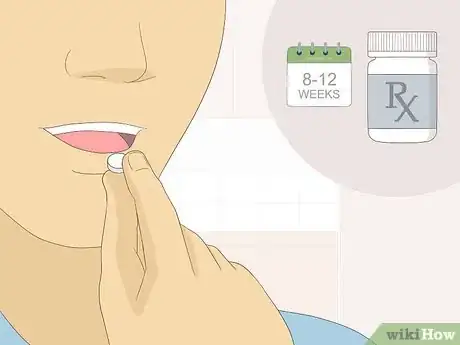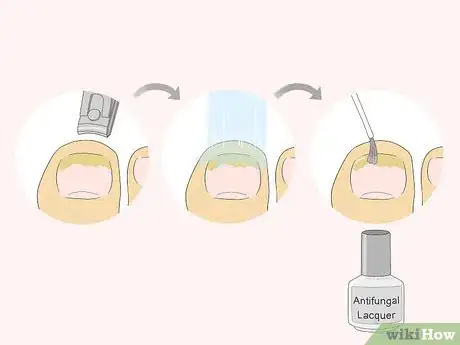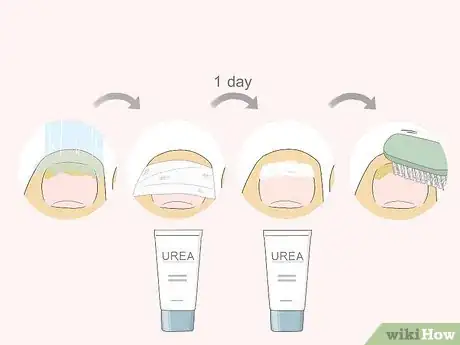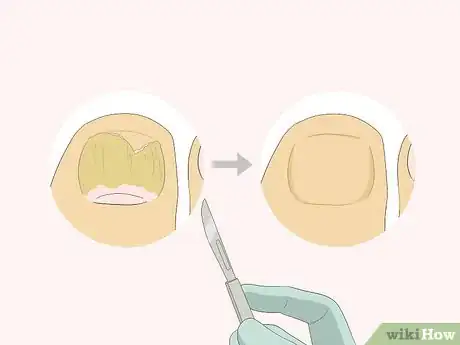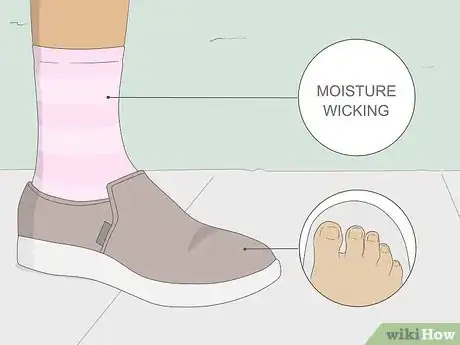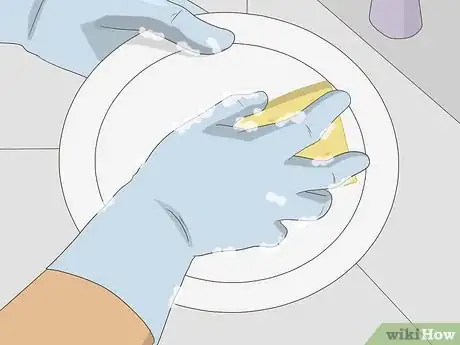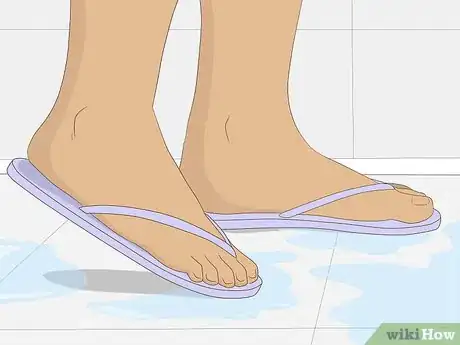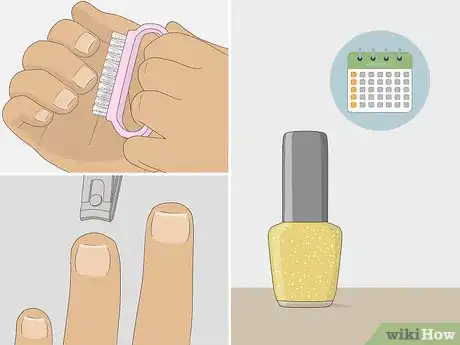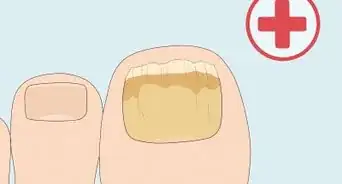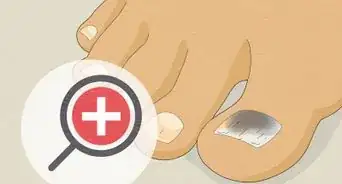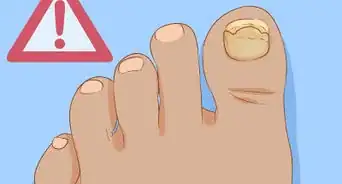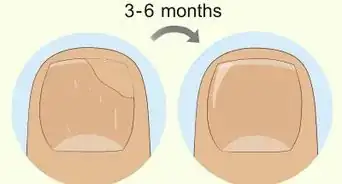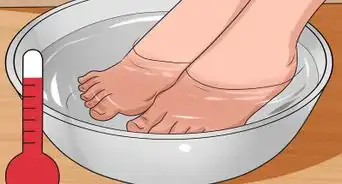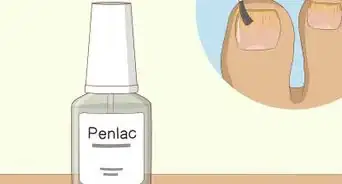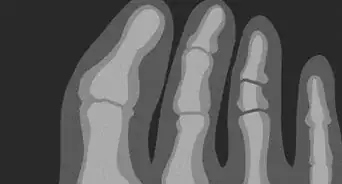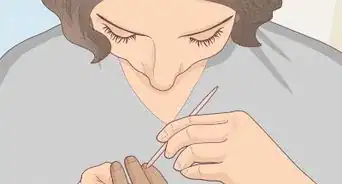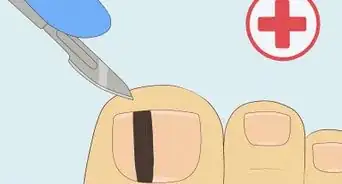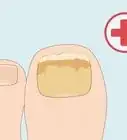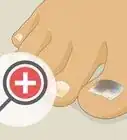This article was medically reviewed by Luba Lee, FNP-BC, MS and by wikiHow staff writer, Jessica Gibson. Luba Lee, FNP-BC is a Board-Certified Family Nurse Practitioner (FNP) and educator in Tennessee with over a decade of clinical experience. Luba has certifications in Pediatric Advanced Life Support (PALS), Emergency Medicine, Advanced Cardiac Life Support (ACLS), Team Building, and Critical Care Nursing. She received her Master of Science in Nursing (MSN) from the University of Tennessee in 2006.
There are 12 references cited in this article, which can be found at the bottom of the page.
wikiHow marks an article as reader-approved once it receives enough positive feedback. This article received 12 testimonials and 100% of readers who voted found it helpful, earning it our reader-approved status.
This article has been viewed 1,136,042 times.
If you have nail fungus but don't want to waste your time on ineffective home remedies, choose home treatments that are supported by research. Although these may take some time to work, you'll actually treat the fungus that's causing the nail infection. You can also ask your doctor about oral or topical medications if you're not seeing results with home remedies.
Steps
Trying a Home Remedy
-
1Drop an antifungal essential oil on the nail once a day for a natural treatment. Mix 12 drops of carrier oil, such as olive or coconut oil, with 1 to 2 drops of an antifungal essential oil. Then, put 1 to 2 drops of the mixture on the nail and leave it to soak for 10 minutes. To help the oil penetrate the nail, you can gently scrub the oil into your nail with an old soft toothbrush.[1]
- If you have diabetes or a weakened immune system, skip trying the home remedies and get medical attention as soon as you notice the fungus on your nail.
- Repeat this every day for at least 3 months in order to treat the nail.
Antifungal Essential Oils:
Aegle
Citronella
Geranium
Lemongrass
Orange
Palmarosa
Patchouli
Peppermint
Eucalyptus -
2Brush snakeroot extract onto the nail 2 to 3 times a week if you don't want to use drops. Purchase an anti-fungal treatment that contains snakeroot extract, an effective antifungal. These treatments usually contain brushes that you use to dip into the extract and spread onto the nail. Treat the nail 2 or 3 times throughout the week and let the nail dry.[2]
- You'll need to apply the snakeroot extract for about 3 months before you can see results.
- Buy snakeroot extract at your local health store, supermarket, or online.
Advertisement -
3Rub mentholated ointment into the nail once a day for long-term treatment. Research has shown that massaging a mentholated topical ointment into the nail is an inexpensive and effective treatment. Dip a clean cotton swab or finger into the ointment and then spread it onto the nail with the fungus. Keep doing this once a day until the infection clears.[3]
- If you want to do this before you go to bed, consider wearing gloves or socks to prevent the ointment from rubbing off on your bed.
- Keep in mind that it may take up to a year before the nail is treated.
-
4Try applying a baking soda paste on the nail at least once a day for an inexpensive option. Although more research is needed, one study suggests that baking soda can slow the growth of the fungus. To use baking soda, put baking soda into a small bowl and stir in enough water to make a spreadable paste. Put the paste on your nail and leave it for 10 minutes. Then, rinse off the nail and dry it completely.[4]
- You can try this remedy several times a day, but it may take up to a year before you see results.
- Although you may see some home remedies that promise a cure by mixing baking soda with vinegar, this hasn't been proven to be effective.
Getting Medical Treatment
-
1Schedule an exam if the nail fungus doesn't respond to home treatment. If you've tried home remedies for at least 3 months for a fingernail or 12 months for a toenail and haven't seen improvement, contact your doctor. You should also schedule an appointment if the nail looks like it's becoming discolored or thicker.[5]
- If the nail becomes very thick, it can be difficult to treat it using home remedies so it's important to get a medical diagnosis and treatment plan.
- The doctor will take a nail culture and examine it under a microscope to make a diagnosis.
-
2Take prescription oral medication for 8 to 12 weeks to treat the fungus. Prescription medications are one of the most effective treatments for nail fungus, even though they can take a few months to work. Your doctor may prescribe terbinafine tablets every day to treat the fungus.[6]
- Talk with your doctor about side effects, such as rashes and liver problems. Let your doctor know if you're taking antibiotics, asthma medications, heart medications, or antidepressants since oral antifungal medications can interact with them.
-
3Brush on an antifungal lacquer every day for at least 2 months to treat the nail. If you're concerned about the side effects of oral antifungal medications or your nail infection isn't severe, your doctor may prescribe a clear antifungal polish that you use once a day. Trim the nail and wash it with water or rubbing alcohol before you brush the polish onto the nail.[7]
- Some antifungal lacquers only need to be used every other day or a few times a week, so ask your doctor for specific directions.
-
4Try topical creams if less than half of the nail is affected by fungus. If your doctor thinks your nail might respond to light treatment, they'll probably have you soak the nail in water before applying a urea-based cream which will soften the nail even more. You'll cover it with a bandage for 1 day and then soak the nail again. Then, you'll scrape the nail off and apply more cream. Repeat this treatment for 2 weeks.[8]
- You'll apply an antifungal cream after you've scraped off the infected part of the nail in order to completely clear up the nail.
-
5Opt for surgical removal if your nail doesn't respond to oral or topical treatment. For severe infections, your doctor might want to remove the nail so they can put medication directly on the infection that's under the nail. Once the nailbed is treated, your nail should eventually grow back healthy.[9]
Did You Know? In some cases, the doctor may want to stop the nail from growing back. Ask your doctor about their goals for surgery and recovery so you'll feel comfortable with the outcome.
Preventing Nail Fungus
-
1Pick breathable socks and comfortable footwear. Your feet should be dry throughout the day to prevent fungus from growing. Wear socks that wick away moisture and ensure that your shoes aren't so tight that your toenails are pinched.[10]
- Try to alternate your everyday shoes so one pair can air out before you wear it the next time. This will prevent trapped moisture from getting into your nails.
Tip: If you can, avoid wearing tight-fitting hosiery, such as pantyhose, tights, or compression socks, since these can trap moisture near the nails.
-
2Wear rubber gloves when washing dishes or using cleaning products. This not only prevents you from coming into contact with bacteria while performing chores around the house, but it also keeps your hands dry. Since fungus likes warm, moist places, keeping your hands dry can prevent an infection.[11]
- Change the gloves if liquid gets trapped in them since you don't want your nails to be soaking in dishwater or cleaning solution.
-
3Wear shoes or sandals in public places. Since you could pick up a fungus from walking barefoot in public places, always wear your own sandals. Remember to wear them in public showers, locker rooms, or at public swimming pools.[12]
- Avoid sharing someone else's shoes or sandals.
-
4Trim your nails and keep them clean. Wash dirt out from under your nails and trim them straight across before they get long. Although you can paint your nails occasionally, give your nails a break between colors since the paint can trap moisture and increase your risk for infection.[13]
- If you get your nails done at a nail salon, ensure that they sterilize their equipment and tubs every client.
References
- ↑ https://www.ncbi.nlm.nih.gov/pubmed/8893526
- ↑ https://www.ncbi.nlm.nih.gov/pubmed/18671197
- ↑ https://www.jabfm.org/content/24/1/69.long
- ↑ https://www.ncbi.nlm.nih.gov/pubmed/22991095
- ↑ https://www.ncbi.nlm.nih.gov/pmc/articles/PMC3040862/
- ↑ https://www.ncbi.nlm.nih.gov/books/NBK279546/
- ↑ https://www.ncbi.nlm.nih.gov/pmc/articles/PMC4360009/
- ↑ https://www.ncbi.nlm.nih.gov/books/NBK279546/
- ↑ https://www.mayoclinic.org/diseases-conditions/nail-fungus/diagnosis-treatment/drc-20353300
- ↑ https://www.aad.org/media/news-releases/six-ways-to-prevent-toenail-fungus
- ↑ https://www.aad.org/public/diseases/contagious-skin-diseases/nail-fungus#causes
- ↑ https://www.aad.org/media/news-releases/six-ways-to-prevent-toenail-fungus
- ↑ https://www.mayoclinic.org/diseases-conditions/nail-fungus/symptoms-causes/syc-20353294
- ↑ https://www.ncbi.nlm.nih.gov/pmc/articles/PMC3040862/
- ↑ https://www.ncbi.nlm.nih.gov/pubmed/28378259
About This Article
To get rid of nail fungus, try mixing baking soda and water and applying the paste to your nail for 10 minutes before rinsing it off. Repeat several times a day to see results. Alternatively, you can try applying an antifungal essential oil to your nail every day for several months. Just mix 2 drops of an antifungal essential oil, like eucalyptus or peppermint oil, with 12 drops of a carrier oil, like olive or coconut oil, and apply a couple drops of it to your nail for 10 minutes. You can even get rid of nail fungus by massaging some mentholated topical ointment, like a vapor rub, into your nail once a day. If the nail fungus doesn't respond to home treatments, schedule an appointment with your doctor so they can help you treat it with medication. For advice from our Medical co-author, like how to prevent nail fungus, read on!
